Issues Management Monthly: The Importance of Tone
(By Tom Lynch-Staunton for CCA Action News)
Working in the Public and Stakeholder Engagement space, I spend considerable time thinking about the tone of our messaging when we strive to be transparent about production practices and how beef is raised. It’s not just about what we say; how we relay information is equally important in how receptive the public will be to the messaging we are trying to impart. Whenever we address a consumer concern, issue or question, we must be conscious of our tone and delivery, and even our body language. Projecting a positive, helpful and constructive tone will usually encourage engagement, and conversations that foster understanding can then happen in a safe space.
In my view, the more positive and open we are about answering consumer questions about beef production – accepting that sharing the many benefits of raising cattle will be an ongoing task – will eventually grow positive public perceptions of the industry and beef production more so than reacting negatively when addressing misinformation.
Occasionally there may be situations where it may be appropriate to show frustration, be forceful, or present messages with a firmer tone. Yet there is a way to encourage productive conversation without coming across as negative or antagonistic. For example, recently, I was listening to a talk radio discussion about political attack ads. Personally, I quickly tire of the barrage of negativity and meanspirited commentary that accompany such ads, which serves to distract from perhaps valid questions around policies and actions. Imagine if instead of focusing on how bad the other party is, the conversation bridged to solutions one can provide to address the problem at hand? This is a much more productive way to get one’s point across.
There are many areas where such an approach could be applied. For example, in my most recent column, I wrote about meat alternatives, particularly vegetable and pulse-based imitations (veggie burgers) or cultured meats. As an industry, we need to be conscious of how we react to these products and whether our reaction will affect public perception. Certainly, we need to call out misleading claims or implications, but we can also present many positive messages about our industry. Perhaps we can even figure out ways where these products can complement our own. I recently saw a recipe for a lentil, cilantro and beef burger, which looked pretty good to me, and got me thinking about how many great nutrients I can get from that meal. One of my favourite foods are tacos where you can get pulses (black beans) and beef, but also vegetables, cheese, and whole grains in an ultimate nutrient rich and delicious meal.
Earlier this month, representatives from the CCA, Alberta Beef Producers, Canada Beef, and the Canadian Pork Council attended a Canada Food Guide Forum hosted by the O’Brien Institute for Public Health at the University of Calgary. Of course, I was hoping to have some good discussions and debate about the proposed recommendation for the new Food Guide and Front-of-Package labeling. Unfortunately, there wasn’t a lot of opportunity to do so except on Twitter. Although I was frustrated several times about the discussion on saturated fats or the inference that plant-based proteins are better for you than animal-based proteins, I wanted to be careful about how I got my point across on Twitter, with a goal of encouraging people to understand that there is a lot more to the discussion. Rather than get vocal with pointed statements, I tried to get people to consider the possibility that animal-based proteins are nutritious when eaten appropriately in a balanced diet. I was asking questions such as, “are plant-based proteins better for you in all cases and contexts?” Of course, I know the answer, but the goal is to inspire some critical thinking about the subject, without being perceived as antagonistic or negative.
There are times where it is appropriate to tell it like it is. When asked a question about how cattle are raised, we need to be factual, and although we would want to present many of the benefits of raising cattle, we also need to be very transparent about how cattle are raised. These are the discussions about the use of technologies like hormones along with animal welfare, the realities of caring for animals, and sometimes the harshness of nature.
Older Newer